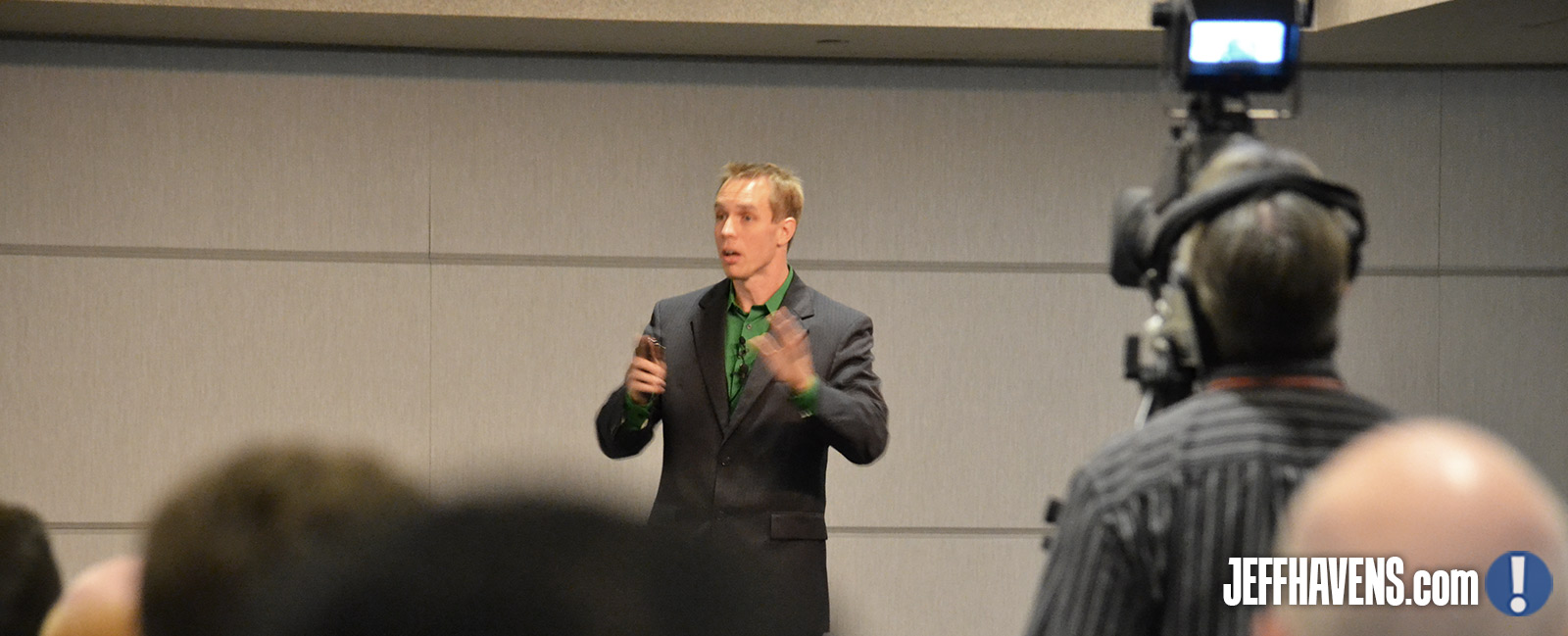I’ve spent the last decade of my life on one stage or another, first as a stand-up comedian and now as a corporate keynote speaker. Those two careers might seem to have nothing in common, but they’re actually closely related. Both require you to build engaging presentations, both demand an ability to capture an audience’s attention – and both need to be funny.
Does a corporate presentation have to have humor? Strictly speaking, no. But even a single joke at the beginning of a serious presentation can put your audience at ease and earn you more of their attention than you’ll get if you jump right into a lecture.
Fortunately, I’ve written hundreds of good jokes and easily as many terrible ones. It’s far easier to miss than hit when it comes to telling a great joke, but following this formula will help make sure you have your audience on the edge of their seats.
Know Your Strengths and Weaknesses
I am not a particularly good storyteller. My jokes tend to be more about ideas than they are about people. And while I can always work to improve my storytelling ability, I shouldn’t practice that in front of a professional audience. Think back to the kinds of things you say when you’re with friends that get them to laugh, and figure out where you’re already solid. Then build that kind of humor into your presentation.
Practice In Private
Good comedians always make it look like what they’re saying is natural, but it’s almost always crafted through a lot of trial and error. If you have an idea that you think is funny, run it by a few friends first. If they laugh, then run it by a few acquaintances or colleagues – you know, the people who don’t feel obligated at what you say. If they laugh too, then you’re onto something. If not, your joke needs more work.
Edit Relentlessly
Amateur joketellers spend 90% of their time on the set-up and 10% on the punchline. Expert joketellers do it the other way around – the shortest set-up possible followed by as many winning lines as they can think of. If you’re telling a story, make sure there are some funny lines in between the set-up and final payoff. If you’re crafting a different kind of joke, see how many words you can cut out of it without losing the effect. Generally speaking, shorter is better.
Delivery is King
Some jokes are designed to be read. Others are designed to be heard. Humor is a tricky thing, and you’ll need to practice out loud to make sure that your tone and inflections are conveying the message you want them to. You can always inaugurate a new joke in front of a group of prospective clients, but it also won’t kill you to run through it a handful of times in the car on your way to the meeting.
Only Keep the Universal Ones
Some jokes are funny to our friends because they know the situation we’re referring to, but those same jokes fall flat when you’re telling them to a bunch of strangers. (Note: if you find yourself saying, “You just have to know Bob,” then you’ve lost.) Some jokes are hysterical to people in one profession and incomprehensible to people in another. (Ask me sometime about the computer science joke I told to an audience of non-computer people. Even the crickets were quiet.) The ones you’ll end up keeping in your standard presentation are the ones that work for all audiences – but don’t forget to pull out your best accountant jokes the next time you’re speaking at an accounting conference.
Joketelling is definitely more art than science, but there is certainly some science to it. Which reminds me – did you hear the one about the chemist, the biologist, and the virologist?
Nevermind. I know I lost you at ‘virologist.’








